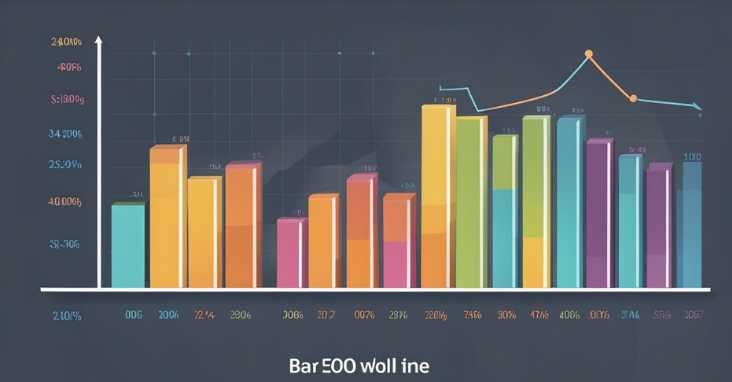What is OTE Salary? OTE Salary is the total potential earnings an employee can make, combining base salary with bonuses and commissions, based on performance.
OTE salary, or On-Target Earnings, is a term commonly used in the sales industry to describe the total compensation an employee can expect to earn based on their performance. It is a combination of a base salary and additional commission or bonuses earned for achieving specific targets. Understanding OTE salary is crucial for both employers and employees in order to set realistic expectations and ensure fair compensation.

Calculating OTE can be a complex process that requires careful consideration of various factors such as sales targets, commission rates, and performance metrics. It is important for companies to have a clear and transparent OTE structure that motivates employees to perform at their best while also aligning with the company’s overall compensation strategy. Additionally, OTE can be a powerful tool for recruitment and retention, as it provides a clear incentive for top performers to stay with the company.
Key Takeaways
- OTE salary is a combination of base salary and additional commission or bonuses earned for achieving specific targets.
- Calculating OTE salart can be a complex process that requires careful consideration of various factors such as sales targets, commission rates, and performance metrics.
- OTE can be a powerful tool for recruitment and retention, as it provides a clear incentive for top performers to stay with the company.
Understanding OTE salary
Definition of OTE salary
OTE salary, or On-Target Earnings, is a term used to describe the total compensation an employee can expect to earn if they meet or exceed their sales targets. It is a common way of calculating sales compensation for employees who work on commission. OTE salary includes both the base salary and the expected commission earnings.
The OTE is usually expressed as an annual figure, but it can also be calculated on a monthly or quarterly basis. It is important to note that OTE is not a guaranteed salary, as it depends on the employee’s performance and the company’s sales targets.
Components of OTE
The components of OTE include the base salary and the commission earnings. The base salary is the fixed amount of money that an employee receives for their work, regardless of their performance. The commission earnings, on the other hand, are variable and depend on the employee’s sales performance.
The commission can be calculated in different ways, such as a percentage of the sales revenue or a flat rate per sale. The commission rate can also vary depending on the product or service being sold and the sales volume.
It is important to understand the components of OTE as they can have a significant impact on an employee’s total compensation. For example, a higher base salary may provide more financial stability, but a lower commission rate may result in lower overall earnings.
To learn more about OTE and how it is calculated, visit this resource, which provides a detailed explanation and examples.
Calculating OTE salary
Calculating On-Target Earnings (OTE) is an essential part of understanding sales compensation. OTE salary is the total compensation an employee can expect to earn if they meet their sales quota. It includes the base salary and any commissions or bonuses that are part of the pay structure.
Factors Influencing OTE salary
The OTE salary for a sales position is influenced by several factors. These factors include the commission rate, base salary, quota, and sales commission. Commission rates and commission percentages can vary based on the type of product or service being sold, the salesperson’s experience, and the company’s goals. The base salary is the fixed amount of money paid to the employee, regardless of their sales performance. The quota is the minimum amount of sales the employee must achieve to earn commissions. The sales commission is the percentage of the sale that the employee earns in addition to their base salary.
OTE salary Formulas
There are several formulas used to calculate OTE salary. One common formula is:
OTE = Base Salary + (Total Sales x Commission Percentage)
Another formula is:
OTE = Base Salary + (Quota x Commission Rate)
There are also sales compensation calculators available online that can help calculate OTE salary based on specific pay structures.
It is important to note that commission rates and structures can vary widely between companies and industries. Salespeople should carefully review their pay structure and understand how their OTE is calculated.
For more information on calculating OTE and sales compensation, check out this resource from SalesHacker.
OTE salary in Sales Roles
Sales roles are often associated with high earning potential due to the nature of the job. One of the key factors that determine a salesperson’s earning potential is their OTE salary, or On-Target Earnings. OTE salary represents the total compensation a salesperson can earn if they meet or exceed their sales targets. In this section, we’ll explore the OTE salary for various sales roles.
Sales Rep OTE salary
Sales reps are typically entry-level sales roles responsible for generating leads, qualifying prospects, and closing deals. According to Glassdoor, the average base salary for a sales rep in the United States is $51,000 per year, with an OTE of around $70,000 per year. However, this can vary based on industry, location, and company size.
Account Executive OTE salary
Account executives are typically more experienced sales professionals responsible for managing key accounts and driving revenue growth. According to Payscale, the average base salary for an account executive in the United States is $63,000 per year, with an OTE of around $100,000 per year. However, this can vary based on industry, location, and company size.
Sales Manager OTE
Sales managers are responsible for leading and managing a team of sales reps or account executives. According to Salary.com, the average base salary for a sales manager in the United States is $120,000 per year, with an OTE of around $200,000 per year. However, this can vary based on industry, location, and company size.
Executive OTE salary
Executives are typically the highest-ranking sales professionals in an organization, responsible for setting sales strategy and driving revenue growth at the company level. According to Indeed, the average base salary for a sales executive in the United States is $126,000 per year, with an OTE of around $250,000 per year. However, this can vary based on industry, location, and company size.
In conclusion, OTE salary is an important factor to consider when evaluating sales roles and their earning potential. It’s essential to keep in mind that OTE can vary widely based on industry, location, and company size, so it’s important to do thorough research before accepting a sales job offer.
OTE salary and Performance

When it comes to sales, hitting targets is essential for success. One of the most important factors in determining a salesperson’s compensation is their On-Target Earnings (OTE). OTE salary is the total amount of compensation a salesperson can earn if they meet or exceed their performance targets. In this section, we will explore how OTE salary is tied to performance and the metrics used to measure it.
Quota Attainment
A salesperson’s performance is often measured by their ability to meet or exceed their quota. Quotas are typically set by management and are based on a variety of factors, including historical sales data, market trends, and the company’s overall goals. Quota attainment is a crucial metric for determining a salesperson’s OTE salary. If a salesperson consistently meets or exceeds their quota, they are likely to earn more than someone who falls short.
Performance Metrics
There are several performance metrics used to determine a salesperson’s OTE salary. These metrics may include:
- Sales targets: The specific amount of revenue a salesperson is expected to generate within a given period.
- Sales goals: The broader objectives that a salesperson is working towards, such as increasing market share or expanding into new territories.
- Performance objectives: The specific actions a salesperson needs to take to achieve their sales targets and goals.
- Achievement: The extent to which a salesperson has met or exceeded their performance targets.
By tracking these metrics, sales managers can gain a better understanding of a salesperson’s performance and adjust their compensation accordingly.
It’s important to note that OTE is not a guaranteed salary. Sales performance can fluctuate based on a variety of factors, including market conditions, competition, and customer demand. Salespeople who consistently outperform their targets are likely to earn more than those who struggle to meet their goals.
For more information on OTE salary and performance, check out this resource from Salesforce.
OTE salary and Employee Motivation

When it comes to motivating employees, the On-Target Earnings (OTE) structure can be a powerful tool. OTE salary refers to the total amount an employee can earn, including base salary and any additional incentives or bonuses. This structure can be highly motivating for employees as they have a clear understanding of their earning potential and can work towards achieving their goals.
Incentives and Bonuses
Incentives and bonuses are an important part of the OTE salary structure. They provide employees with a reward for their hard work and help to motivate them to achieve their targets. One popular incentive is the likely bonus, which is a bonus that an employee is likely to receive if they achieve their targets. Another incentive is the accelerator, which is an additional bonus that an employee can earn if they exceed their targets.
To ensure that incentives and bonuses are effective, it is important to set clear and achievable targets. This will give employees a clear understanding of what they need to do to earn the reward. It is also important to ensure that the reward is meaningful and relevant to the employee.
Motivation Strategies
There are a number of motivation strategies that can be used in conjunction with the OTE salary structure. One effective strategy is to provide employees with regular feedback on their performance. This can help to keep them motivated and focused on achieving their targets.
Another strategy is to provide employees with opportunities for career development. This can include training and development programs, mentoring, and coaching. By investing in the development of their employees, employers can help to motivate them and encourage them to achieve their goals.
Overall, the OTE salary structure can be a powerful tool for motivating employees. By providing employees with a clear understanding of their earning potential and setting achievable targets, employers can help to incentivize and motivate their workforce. Additionally, by using effective motivation strategies, employers can help to ensure that their employees remain motivated and engaged in their work.
Here is a link to an external resource with more information on OTE salary and its impact on employee motivation.
Company Compensation Strategies

Designing Compensation Plans
Designing a compensation plan is a crucial aspect of any company’s strategy. It involves creating a system that rewards employees for their contributions to the company’s success. A well-designed compensation plan motivates employees to work harder, stay with the company longer, and contribute to the company’s overall growth.
Employers must take into account several factors when designing a compensation plan. These factors include the company’s financial situation, the industry standards, and the company’s goals. The compensation plan should be fair, competitive, and aligned with the company’s objectives.
To design an effective compensation plan, employers should consider the following:
- Base salary
- Bonuses
- Stock options
- Benefits
Employers should also take into account the total compensation package, which includes all forms of compensation an employee receives, such as insurance, retirement plans, and paid time off.
Balancing Pay Mix
Balancing pay mix is another critical factor in designing a compensation plan. The pay mix refers to the proportion of base salary, bonuses, and other incentives in the compensation package. The goal is to create a balanced pay mix that motivates employees while aligning with the company’s goals.
Sales compensation is a great example of balancing pay mix. Sales organizations often use a mix of base salary and commission to motivate their sales team. The base salary provides a steady income, while the commission incentivizes salespeople to work harder and close more deals.
Employers must strike a balance between fixed and variable compensation. Fixed compensation, such as base salary, provides a stable income, while variable compensation, such as bonuses and stock options, motivates employees to work harder and achieve company goals.
To balance the pay mix, employers should consider the following:
- The company’s financial situation
- The industry standards
- The company’s goals
- The employee’s performance
Employers must ensure that the pay mix is fair, competitive, and aligned with the company’s objectives.
For more information on designing compensation plans and balancing pay mix, please refer to this external resource.
OTE salary and Recruitment

When it comes to attracting top talent in sales, offering a competitive OTE (On-Target Earnings) is a crucial factor. OTE is the total compensation an employee can expect to earn if they meet their sales targets. It includes a base salary plus commission or bonuses.
Attracting Top Talent
Candidates who are highly skilled and experienced in sales are often looking for opportunities with high earning potential. By offering a competitive OTE, companies can attract top talent and stand out in a crowded job market.
According to a survey by Glassdoor, 67% of job seekers said that salary and compensation is a top consideration when choosing a job. By offering a competitive OTE, companies can increase their chances of attracting the best candidates.
Job Descriptions and OTE
Job descriptions play a critical role in attracting top talent. Including details about the OTE in the job description can help candidates understand the earning potential of the position. It can also help set expectations for what the candidate can achieve if they meet their targets.
When creating job postings, companies should be transparent about the OTE and how it is calculated. This can help attract candidates who are motivated by earning potential and are more likely to be successful in a sales role.
According to a report by Payscale, the average OTE for a sales representative is $64,000 per year. However, this can vary depending on the industry and type of sales job.
Overall, offering a competitive OTE can be a powerful tool in attracting top talent and motivating sales representatives to achieve their targets. By being transparent about the OTE and including it in job descriptions, companies can increase their chances of hiring successful sales representatives.
Here is a link to a Glassdoor survey on job seekers and salary considerations.
Realistic OTE Expectations

When it comes to OTE (On-Target Earnings), it is important to have realistic expectations. Unrealistic expectations can lead to disappointment and frustration, which can ultimately affect an individual’s performance. In this section, we will discuss some factors that can help set attainable quotas and foster transparency in earnings.
Setting Attainable Quotas
Sales quotas are a critical component of OTE. A sales quota is a target that sales representatives are expected to achieve within a specific period, typically a year. Setting unrealistic quotas can be demotivating for sales reps, leading to burnout and high turnover rates. Therefore, it is important to set quotas that are challenging but achievable.
One way to set attainable quotas is by analyzing past performance data. This can help identify trends and patterns, which can be used to set realistic targets. It is also important to consider external factors such as market conditions, competition, and economic trends.
Transparency in Earnings
Transparency in earnings is crucial for building trust and maintaining a positive work environment. Sales reps should have a clear understanding of how their earnings are calculated and what factors contribute to their OTE.
One way to foster transparency is by providing sales reps with a breakdown of their earnings, including their base salary, commission, and bonuses. This can help them understand how their performance affects their earnings and motivate them to work harder.
Another way to promote transparency is by providing regular feedback and coaching. Sales reps should have a clear understanding of what they need to do to achieve their quotas and earn more money. This can help them focus on the right activities and improve their performance over time.
In conclusion, having realistic OTE expectations is crucial for success in sales. By setting attainable quotas and fostering transparency in earnings, sales reps can stay motivated and achieve their full potential. For more information on setting realistic quotas, check out this resource from Salesforce.
OTE and Company Growth

In the world of sales, On-Target Earnings (OTE) is a crucial component of compensation packages. OTE is the sum of an employee’s base salary plus their expected commission earnings, and it is used to motivate salespeople to achieve their sales goals. However, OTE is not just a tool for incentivizing salespeople; it also has a significant impact on a company’s growth.
Impact on Revenue and Productivity
One of the most significant ways that OTE impacts a company’s growth is through its effect on revenue and productivity. When salespeople are motivated to achieve their sales goals, they are more likely to engage with customers and close deals, which leads to increased revenue. Additionally, salespeople who are incentivized with OTE are typically more productive, as they are focused on achieving their sales targets.
OTE as a Growth Metric
OTE can also be used as a growth metric for companies. By tracking the OTE of their sales employees, companies can gain insights into the effectiveness of their sales process and the engagement of their salespeople. For example, if a company’s OTE is increasing over time, it may indicate that their sales process is becoming more efficient or that their salespeople are becoming more engaged with their work.
Overall, OTE is a powerful tool for motivating salespeople and driving company growth. By incentivizing sales employees with OTE, companies can increase revenue, improve productivity, and gain valuable insights into their sales process.
For more information on OTE and its impact on company growth, check out this article from Salesforce.
Additional Considerations

Overtime and OTE
When it comes to calculating OTE (On Target Earnings), it is important to consider overtime pay. Overtime pay is typically paid at a higher rate than regular pay and can significantly impact an employee’s expected total pay. However, not all overtime pay is included in OTE calculations. For instance, if an employee consistently works overtime, the employer may decide to include the overtime pay in the employee’s base salary, which would then be used to calculate their OTE.
It is also important to note that not all employees are eligible for overtime pay. In the United States, for example, employees who are classified as exempt under the Fair Labor Standards Act (FLSA) are not eligible for overtime pay. Employers should ensure that they are following all relevant laws and regulations when calculating OTE.
OTE Adjustments and Allowances
In addition to overtime pay, there are other factors that can impact an employee’s OTE. Employers may offer various allowances and benefits that can be included in an employee’s OTE calculation. For example, an employer may offer a car allowance or a housing allowance to employees. These allowances would then be added to the employee’s base salary to calculate their OTE.
Employers may also make adjustments to an employee’s OTE based on their performance. For instance, an employee who exceeds their sales targets may receive a bonus, which would then be added to their OTE. Employers should clearly communicate any adjustments or allowances that are included in an employee’s OTE calculation.
It is important for employees to have a clear understanding of how their OTE is calculated. This can help them to better budget and plan for their expected total pay. Employers should also ensure that they are providing accurate and transparent information to their employees regarding their OTE.
For more information on OTE and how it is calculated, check out this resource from the Society for Human Resource Management
Frequently Asked Questions

How is on-target earnings (OTE) calculated?
On-target earnings (OTE) are calculated by combining the base salary with the potential earnings from commissions, bonuses, and other incentives. The OTE figure represents the expected total compensation an employee can earn if they meet or exceed their performance goals.
What factors determine the amount of OTE in a compensation package?
The amount of OTE in a compensation package is determined by several factors, including the industry, the position, the level of experience, and the company’s financial performance. Additionally, the company’s sales targets, revenue goals, and profit margins can also impact the OTE figure.
Is the base salary included in the calculation of OTE?
Yes, the base salary is included in the calculation of OTE. However, the OTE figure represents the total compensation an employee can earn, including bonuses, commissions, and other incentives.
How does OTE differ from base salary in compensation structures?
OTE differs from base salary in compensation structures because it includes the potential earnings from bonuses, commissions, and other incentives. Base salary, on the other hand, is the fixed amount of money an employee receives for their work.
What does it mean when a job offer includes a specific OTE figure?
When a job offer includes a specific OTE figure, it means that the employer is offering a compensation package that includes a base salary and potential earnings from bonuses, commissions, and other incentives. The OTE figure represents the expected total compensation an employee can earn if they meet or exceed their performance goals.
How can differences in OTE affect overall job compensation?
Differences in OTE can significantly impact overall job compensation. For example, a higher OTE figure can result in higher total compensation if an employee meets or exceeds their performance goals. On the other hand, a lower OTE figure can result in lower total compensation, even if the base salary is higher. It is important for job seekers to carefully consider the OTE figure when evaluating job offers.
For more information on OTE and compensation structures, please refer to this resource from the Society for Human Resource Management.












